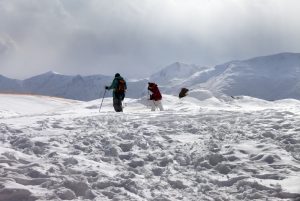
Skiing and snowboarding are typically safe sports, involving very little contact with others. Even though these athletes won’t be colliding with one another on a regular basis, there are still unexpected injuries that can occur. Improper preparation, poor decisions and unexpected weather conditions can all lead to injury. The good news is that many of them can be avoided.
Common Causes of Injuries
There are a variety of causes of skiing and snowboarding injuries. Some of these include a failure to prepare the body for the sports, participating on slopes and courses that are above a person’s ability level, and faulty equipment. Other causes include dehydration and fatigue, skiing and snowboarding in closed areas, and a failure to observe warning signs.
The Most Common Injuries
There are a wide range of skiing and snowboarding injuries that participants suffer from. Some of the most common include anterior cruciate or collateral ligament injuries, shoulder fractures or dislocations, and shoulder separations. Other injuries include those to the spinal cord, head, wrist or hand. In some cases, the injuries sustained in a skiing or snowboarding accident can be severe, requiring hospitalization, months of therapy and more.
Preventing Skiing and Snowboarding Injuries
Most injuries on the slopes can be prevented by using common sense. Participants should stay hydrated throughout the day and well rested. Abiding warning signs and keeping an eye on current weather conditions can be an easy way to prevent injury.
Instruction prior to hitting the slopes is important. Beginners should take instruction from experts. These people can show beginners how to warm up and cool down, how to properly fit their equipment, and how to ski or snowboard safely. Experts can also help beginners decide when they are ready to move on to more advanced terrain.
Safety equipment should be worn by everyone on the slopes. Helmets, wrist guards and elbow pads are recommended as well as kneepads. Studies have shown that the use of protective equipment can reduce head, neck and face injuries by 43 percent.
Skiing and snowboarding don’t have to be dangerous. When participants take the proper precautions, they are less likely to fall victim to injury. Follow the tips above to help reduce your chances of being hurt while taking part in your favorite winter sports.
If you or a loved one has been injured in a skiing or snowboarding accident in Charlotte, call our team of personal injury attorneys. A member of our team will help you schedule a free case evaluation and we will advise you of your options. Call now for assistance or browse our website for more information about our firm.